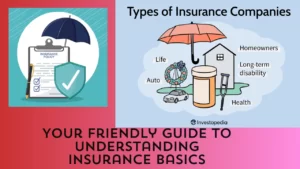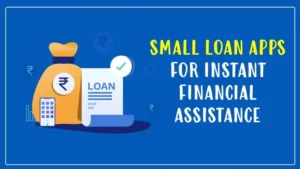Canceling a credit card is a decision that should be approached with careful consideration and a clear understanding of the steps involved. Whether you’re looking to simplify your finances, reduce the number of credit cards you own, or address concerns about security, it’s essential to follow a structured process to ensure a smooth and secure cancellation. In this guide, we’ll walk you through seven steps to safely cancel a credit card.
Step 1: Review Your Finances
Before initiating the cancellation process, take a moment to review your finances. Ensure that canceling the credit card won’t adversely affect your credit score or financial stability. If the card carries an outstanding balance, consider paying it off to avoid any complications during cancellation.
Step 2: Redeem or Transfer Rewards Points
If your credit card comes with rewards points or cashback, make sure to redeem or transfer them before canceling. Most credit card issuers allow you to convert your points into statement credits, gift cards, or other rewards. Check with your issuer for the specific options available.
Step 3: Contact Customer Service
Reach out to your credit card issuer’s customer service either by phone or through their online portal. You can find the customer service number on the back of your credit card or on your monthly statements. Inform them of your decision to cancel and be prepared to provide your account details for verification.
Step 4: Request Confirmation in Writing
Once you’ve communicated your intent to cancel the credit card, request written confirmation of the cancellation. This documentation can serve as proof in case any discrepancies arise in the future. Make note of the cancellation date for your records.
Step 5: Pay Any Remaining Balances
Ensure that all outstanding balances on the credit card are settled. Pay any pending charges, fees, or interest accrued up to the cancellation date. Verify with the customer service representative that your account is in good standing before finalizing the cancellation.
Step 6: Destroy the Card
After confirming the cancellation and settling any remaining balances, physically destroy the credit card. Cut it into several pieces to prevent any unauthorized use. Dispose of the card securely to protect your personal information.
Step 7: Monitor Your Credit Report
Keep a close eye on your credit report in the months following the cancellation. Verify that the canceled credit card account is properly updated and reflected on your report. This ensures that there are no lingering issues affecting your credit score.
Step 8: Update your automatic billing
Review your old credit card statements to determine what expenses were tied to the card. If you used it for recurring expenses and were enrolled in autopay, delete the card and replace it with another payment method.
Impact of Canceling a credit card on your credit
Chances are, you have several credit cards in your wallet. According to , one of the three major credit bureaus, the average American has nearly four credit cards.
If you aren’t using all of your cards, you may be thinking of canceling a card. However, closing a credit card account could damage your credit.
Canceling an account will lower the amount of credit available to you and increase your credit utilization — a factor impacting about 30% of your FICO credit score. In general, lenders look for a credit utilization under 30%. However, the recommends keeping your credit utilization between 1% and 10% to build and maintain good credit.
How does canceling a credit card impact your credit utilization? Consider this example. You have three cards, and each card has a limit of $1,000, so you have $3,000 as a total credit limit. You carry the following balances on each card:
- Card 1: $500
- Card 2: $450
- Card 3: $0
Your total credit card debt is $950, so you’re using approximately 32% of your available credit.
You don’t use Card 3 often, so you decide to close that account. When you close it, you lose access to that card’s $1,000 limit. Even though your overall balance of $950 doesn’t change, the amount of credit you use — your credit utilization — increases. With just two credit cards with $2,000 in combined credit limits, you’re now using 47.5% of your available credit. At that level, lenders may think you are using too much of your available credit, and they’ll be less likely to approve your application for a loan.
Good reasons to Canceling a Credit Card
Although there can be some impact on your credit, there are some cases where closing a card can be a smart decision:
You’re going through a divorce
If you have a joint credit card, you both share responsibility for the card’s charges. That’s true even if you split up; you’ll continue to be legally responsible for your ex-partner’s credit card charges. The only way to end your obligation is to close the credit card.
Your card has expensive fees
Some cards have costly fees, such as annual or monthly account fees. These fees can add up over time so, if you have a card you don’t use regularly, you can save money by closing it.
If a high fee is your primary reason for canceling your card, you may want to consider a product change instead. For example, maybe you no longer travel enough to get the best value from your premium Chase Sapphire Reserve® and believe the lower-fee Chase Sapphire Preferred® Card would better fit your current spending and budget.
Asking your issuer for a change instead of closing the card outright will allow you to maintain the account history on your credit report but still get a card that works better for you.
You’re the victim of fraud
If your identity has been stolen or your credit card account compromised, the thieves could use your information to make charges. If you notify the credit card issuer about the theft, they will cancel your existing card number but keep your account open and issue you a new card.
The structure of the card is changing
Credit card rates, fees, and benefits can change over time. Credit card issuers must notify you of any changes at least 45 days in advance, so if the new terms are less favorable, closing the card can be a good idea.
You have trouble resisting temptation
Personal finance isn’t just dollars and cents; there is a significant psychological component, too. Some people find that having too many credit cards causes them to overspend; the temptation of having a credit limit causes them to spend more than they would otherwise. If that’s the case for you, closing the account could be a smart decision regardless of the impact on your credit.
Managing your credit cards
Now that you know how to cancel a credit card, you can decide whether it makes sense to close one of your cards. Although closing a card can cause your credit score to decrease, it can be worthwhile if you have cards with high fees or are trying to control your spending. If you decide to cancel your card, be sure to update your automatic payments to ensure you continue making all of your payments on time and avoid late fees.
Conclusion:
Canceling a credit card is a decision that requires careful planning and execution. By following these seven steps, you can safely navigate the process, protect your financial well-being, and maintain a positive credit history. Remember to communicate openly with your credit card issuer, settle any outstanding balances, and monitor your credit report to ensure a smooth transition after canceling your credit card.






























1 thought on “Safely Canceling a Credit Card in 7 Steps”
Comments are closed.